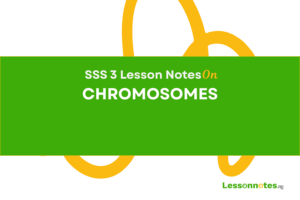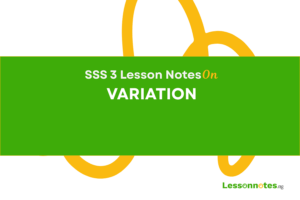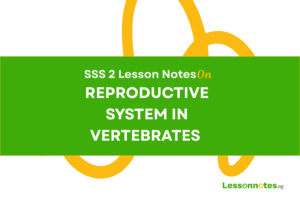Basic Ecological Systems III SS1 Biology Lesson Note
Download Lesson Note
Lesson Notes
Topic: Basic Ecological Systems III
POPULATION CHARACTERISTICS
These include population size, density, frequency, percentage cover and distribution.
- Population size: – this is the number of organisms of the same species living together in a given area at a particular time.
- Population density: – this is the number of a particular species per unit area or volume of the habitat. Therefore
- Population density :- population size/area of habitat.
- Population frequency: – this is the number of times an organism occurs within a given area or habitat.
- Percentage cover: – this refers to how much space or area an organism occupies in its habitat.
- Population growth rate: – this refers to the net result of the influence of natality (birth rate) and mortality (death rate) of organisms in a given habitat.
- Population distribution: – this refers to how individuals of the same species are arranged in a given habitat, either randomly, evenly or clumped.
POPULATION STUDIES
- Choose the habitat.
- Select the sampling method to be used.
- Collect, count and record the different types of organisms present. Sampling using a quadrant or transcent using a tape can be adopted.
- Identify the dominant species i. e. the species that has greater influence on the other members of the community.
- Repeat the population studies at intervals.
- Determine the population characteristics.
FACTORS AFFECTING POPULATION
- Natality: Ability of organisms to reproduce to increase their population
- Mortality: Death rate.
- Immigration: Movement of organisms from different habitats into a new habitat and this increases the population of the new area, decreasing the population of the former habitat.
- Emigration: Movement of organisms out of their habitat due to unfavorable conditions e.g. food scarcity etc. This reduces the population of the habitat.
- Availability of food: Animals tend to migrate to where there is plenty of food, thereby increasing the population of such places.
- Seasonal Climatic Changes: Whether the change is favorable or not determines the stay or migration of organisms into or out of a habitat.
- Breeding Season: Some organisms move out of their habitats during this season (e.g. fishes); hence the population drops.
- Natural Disasters: Fire, drought, floods, earthquakes etc lead to a decrease in population through the death of organisms out of such habitat
MEASUREMENT OF ECOLOGICAL FACTORS
These factors can be measured using some instruments as shown below.
| S/N | INSTRUMENTS | USES |
| 1 | Photometer | Light intensity |
| 2 | Hydrometer | Light intensity |
| 3 | Wind vane | Direction of wind |
| 4 | Anemometer | Speed of wind |
| 5 | Rain gauge | Amount of rainfall |
| 6 | Hygrometer | Relative humidity |
| 7 | Barometer | Pressure |
| 8 | Glass thermometer | Temperature |
| 9 | Colourimeter ie pH scale | Acidity/Alkalinity |
| 10 | Secchi disc | Turbidity |
| 11 | Sweep insect net | Catching insects |
ASSIGNMENT
- Climatic factors in an ecosystem include the following except A. light B. wind C. temperature D. Oxygen.
- The organic part of the abiotic component of an ecosystem includes the following except A.water B. carbohydrate C. Protein d) Lipids
- The ratio of population size to the area of the habitat is called A.population size B. population density C. population frequency D. population cover.
- Habitat factors include all the following except A.biotic B. abiotic C. edaphic D. nature.
- The total number of organisms of the same species in a habitat at a particular time is called A. Population B. community C. census D. all of the above
- List five ecological instruments and state their uses.
- State five factors affecting a population size.























